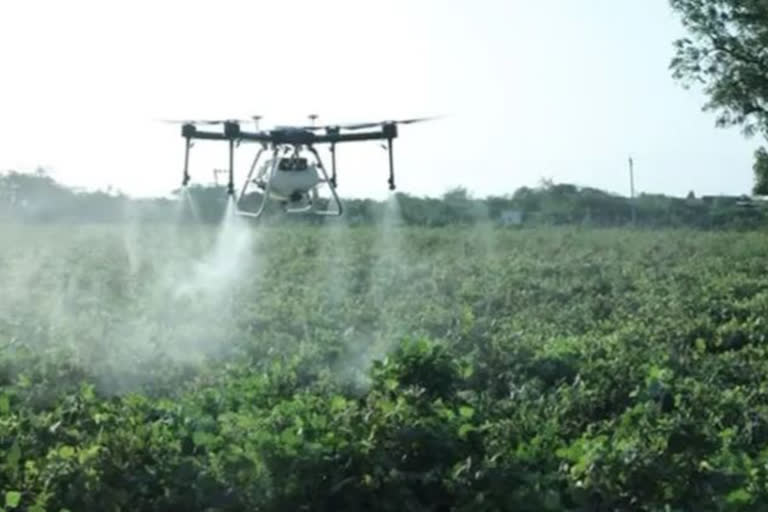Hyderabad: The Green revolution has no doubt achieved the objective of self-sufficiency in production by pushing the farmers from conventional agricultural practices to input-intensive agriculture. However, the production has also meant excessive and uncontrolled use of fertilizers which has caused a lot of damage to the environment, particularly making the soil 'sick'. What we need now is an ever-green revolution.
In this regard, the government of India introduced Soil Health Card to increase the awareness among the farmers on judicious application of fertilizers. Prime Minister Narendra Modi recently reiterated the need to get the soil tested for its nutrient status and take the help of agriculture extension scientists to plan fertilizer dosage and application. Most of the soils across the country are impoverished due to the irrational doses of fertilizers and their application regimes. The technological revolution has the potential to help reduce our dependence on huge quantities of fertilizers particularly those with a high quantity of nitrogen and phosphorus. Let us examine the scope of such technologies.
Plenty of nitrogen in the air but not easily accessible by plants
Nitrogen is one of the most important elements to sustain life. Two most important biological molecules, nucleic acids and proteins, that run the life processes are chiefly made up of nitrogen. The amino acids (building blocks of proteins) and nucleotides (building blocks of nucleic acids) are primarily dependent on nitrogen for their structure and function. More than 75 per cent of the atmosphere is filled with nitrogen gas. Animals, plants and other organisms (other than bacteria) cannot convert the bountiful amount of gaseous nitrogen in the air to usable form to incorporate it into the amino acids or nucleotides.
Some of the invisible bacteria can convert the nitrogen gas to ammonia with the help of a very special complex enzyme called nitrogenase. The plants can make use of this ammonium to incorporate it into the amino acids and nucleotides. Chemists also developed Haber’s process to reduce the atmospheric nitrogen to ammonia at high temperatures and high pressure. The process, however, is highly energy-intensive and also makes urea expensive. The Government of India has been subsidizing the cost of such fertilizers for decades to ensure that essential nutrients like nitrogen are made available to the crops by the farmers.
Biological nitrogen fixation as an avenue
Nitrogenase enzyme, unique to certain bacterial groups, has been the architect of biological nitrogen fixation be it in soil, water or inside the plant in some specialized structures called root nodules. Some bacteria convert atmospheric nitrogen to ammonia as free-living entities in soil, water, or in association with plants in a process called symbiotic nitrogen fixation. Such bacteria, deployed judiciously, decrease plants’ dependence on synthetic fertilizers like urea and diammonium phosphate (DAP). Different products based on such bacteria are made available in the market as biofertilizers. Unfortunately, the farmers still prefer using chemical fertilizers rather than biofertilizers that can significantly reduce the requirement of chemical fertilizers. The quick impact of chemical fertilizers overrides the high cost even for the small farmers.
Nano-urea is available and nano-DAP is being developed
Nanotechnology has come handy in several different areas. One of the striking applications of nanotechnology is nano-fertilizers. Fertilizer giants like Indian Fertilizer Indian Farmers Fertilizers Cooperative Ltd (IFFCO) have developed nano liquid formulations of urea. One bag of urea requirement can be met with one liter of the nano-urea, making things easier in many ways including logistics and supply chain benefits. With the success of nano-urea, several agri-input producers are working on alternate forms of nano urea, nano-DAP and other fertilizers using nano-technology platforms. Field testing of the nano-DAP developed by IFFCO is under progress. Interestingly, alternate nano-technologies are being used to develop nano-DAP, different from the IFFCO technology, to make it available in the Indian market. Scientists have already obtained a proof of concept for the nano-DAP and are moving towards developing a product.
Also read: Government unveils green hydrogen, green ammonia policy


